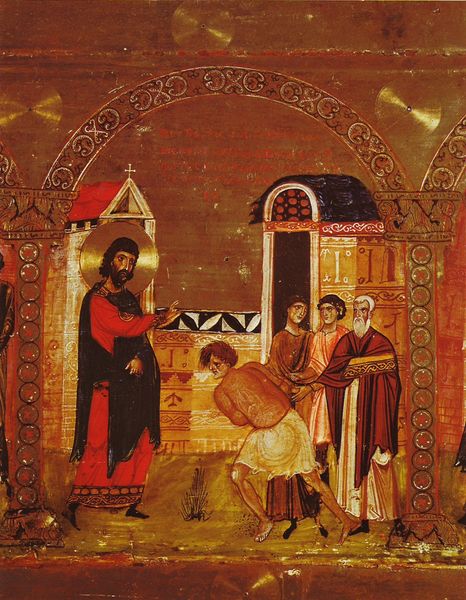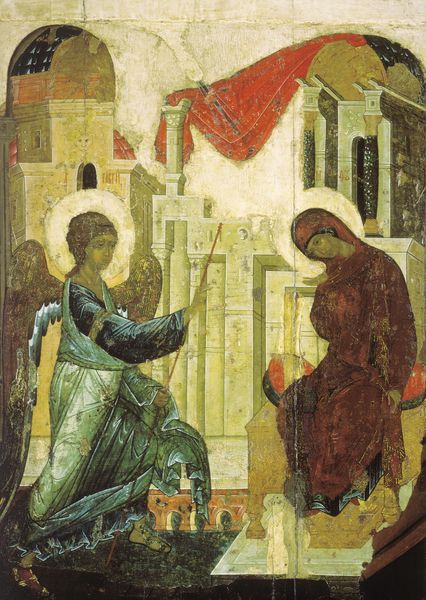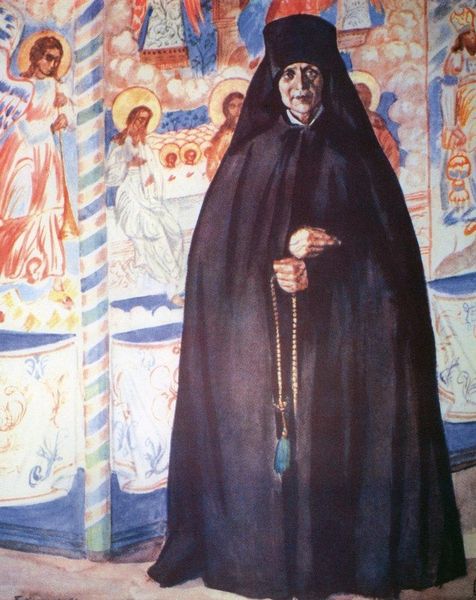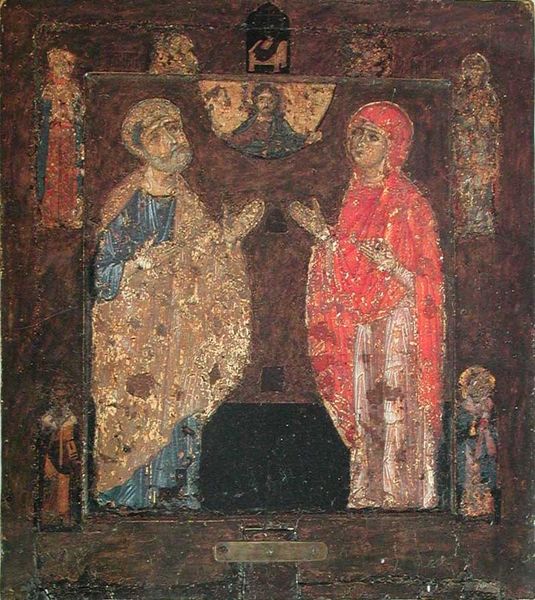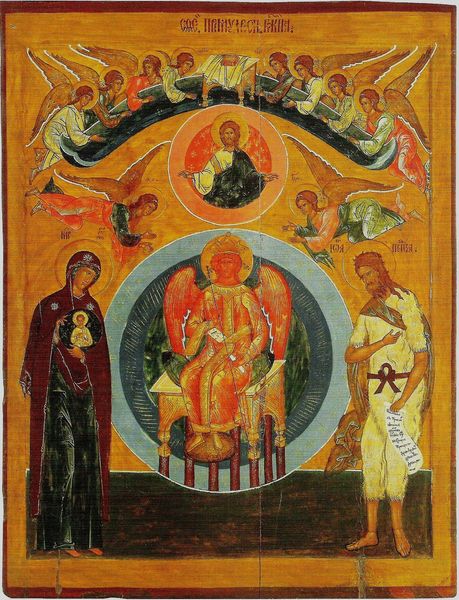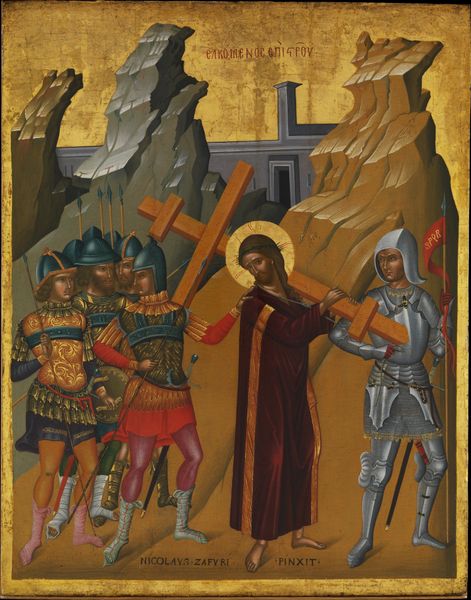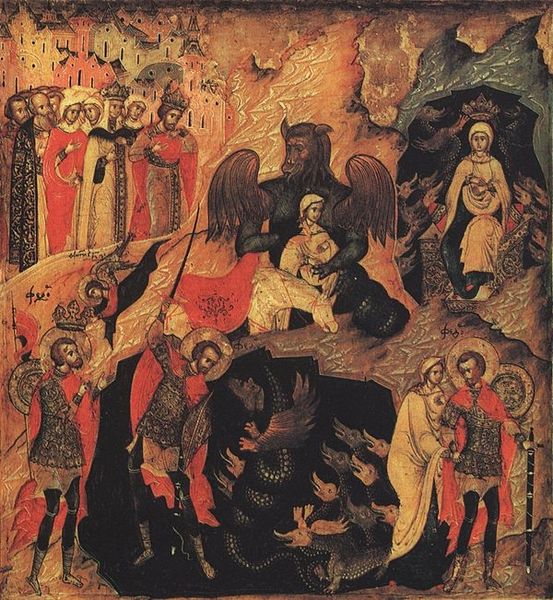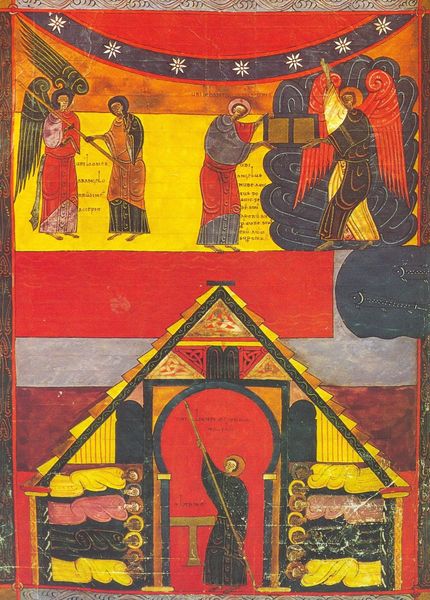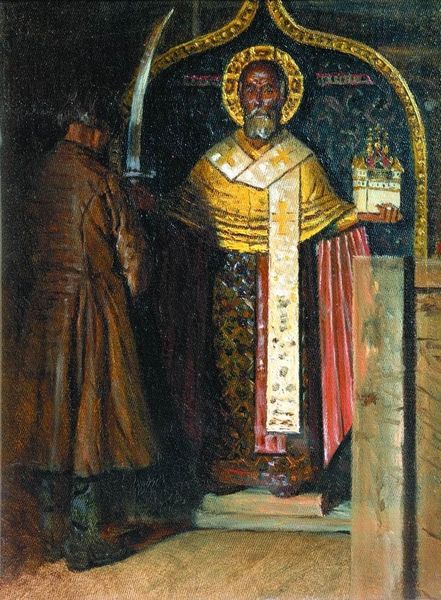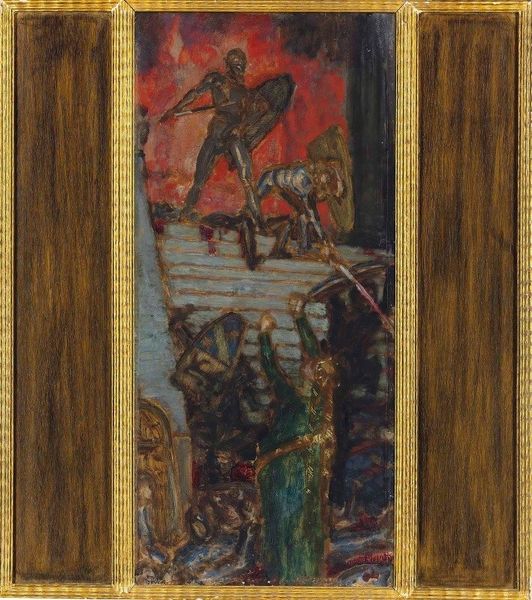
Copyright: Public domain
Curator: Here we have Ivan Milev's "The Cross," painted in 1923. Look at how the scene pulsates with life, despite depicting such a solemn subject! It's a tapestry of vivid colors and raw emotion, don't you think? Editor: Indeed! My initial impression is how tactile the painting is. You can almost feel the coarse weave of the canvas, the thick impasto of the oil paint, particularly in the lower foreground and impasto around the figure of Christ. This makes it far less about ethereal religious experience and more about earthly materials and their handling. Curator: I see what you mean. And yet, the scene itself, while earthy, reaches for something beyond, wouldn't you agree? Milev melds the earthly and the divine so seamlessly, employing techniques inspired by Byzantine art—look at the stylized figures and the symbolic use of color! It is about textures, but also transcendence. Editor: Perhaps. Though to my eye, it’s the depiction of labor that draws me in. Note the garments of the clergy in the foreground. Who manufactured those rough robes? Who mixed the oils to arrive at the ochre tones, or even mined for the pigment? "The Cross" gives me much to think about in terms of labor in relation to devotion. Curator: A beautiful point. I think Milev captures something universally human about sacrifice and devotion. There’s a vulnerability to the figure on the cross—it's almost as if we're invited to consider the human cost of deeply held beliefs. Milev seems to blur the lines between a historical record, and an emotional exploration. Editor: Yes. But also, how that exploration might require human exploitation along the way, historically or otherwise. "The Cross" reminds us that every aesthetic or devotional choice has social implications regarding materials and labour. Curator: A sobering thought to end with. The layers upon layers of interpretation, that is the great gift Milev left for us. Editor: It indeed speaks volumes on many levels, from artistry and materials to the societal and human element it evokes. Thank you.
Comments
No comments
Be the first to comment and join the conversation on the ultimate creative platform.
